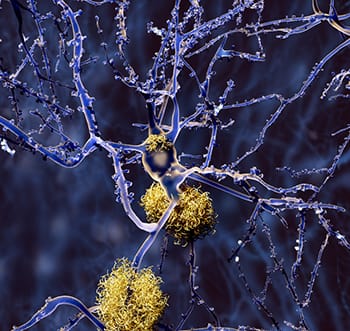What is Alzheimer’s disease
Alzheimer’s disease is an incurable neurodegenerative brain tissue disease (progressive loss of neurons) that leads to the progressive and irreversible loss of mental functions including memory. This is the most common cause of dementia in humans.
Diseases with cognitive loss, including Alzheimer’s, affect 564,000 Canadians.
The common point between Alzheimer’s, Parkinson’s, autism and Multiple Sclerosis as well as many other neurological pathologies is inflammation that starts in the intestine and then reaches the brain.
Different physiological mechanisms have been studied to explain the increase of Alzheimer’s cases.
45%: Increased risk of developing cognitive disease if you smoke
65%: Canadians diagnosed after age 65 are women
Possible causes
There are at least seven tracks in causes research and applied in practice:
- A porous intestine (in English, “Leaky gut”)
- Sugars, Gluten, Casein and AGEs (Advanced Glycation Byproducts such as grilled meat, overheated and smoked oils and caramelized sugars, including charred toast)
- The presence of enemy bacteria that are composed of LPS (lipopolysaccharides, fats and sugars)
- ROS or Reactive Oxygen Species that produce free radicals causing damage and therefore inflammation
- Environmental contaminants including lead, aluminum, pesticides and flame retardants
- Amyloid plaques (Alzheimer’s)
- Mitochondrial disorder (Alzheimer’s and Parkinson’s)
- Lewi body (Parkinson’s and dementia mimicking Alzheimer’s)
The gut-brain link
A porous intestine no longer protects the body from partially digested pathogens and food molecules. The same goes for the blood-brain barrier that is supposed to protect the brain. These two defences can falter when the intestines are subjected to repetitive pro-inflammatory molecules: gluten, refined sugars, refined flours, overheated, hydrogenated and/or trans fats, roasted animal proteins and allergenic foods for the person.
The increase of LPS, a molecule composed of fats and sugars that protect certain bacteria found in our intestines. These bacteria can travel to the brain because of the intestine and the porous blood-brain barrier.
And in the brain?
Mitochondria are the energy production plants in our cells. They need oxygen to function optimally. The same goes for our cells of the nervous system; neurons.
Amyloid plaques are formed by dense deposits of a protein – beta-amyloid, are deposited between neurons and are concentrated mainly in areas of the brain such as the hippocampus, the seat of memory.
The beta-amyloid will influence the recapture sites of acetylcholine by decreasing synaptic transmission.
It will also modulate the availability of acetylcholine via a decrease in mitochondrial efficiency.
In addition the corrupted mitochondria will produce free radicals that will damage the neuron.
B-amyloid will reduce the activity of the enzyme that makes acetylcholine. Acetylcholine is responsible for memorization.
ROS promotes inflammation that develops mitochondrial disorders (which themselves will produce more free radicals) and amyloid plaques. It may be a body repair reaction similar to the cholesterol atheromatous plaque scenario in the arteries. The amyloid plaques are deposited on the walls of blood vessels that are damaged by pro-oxidant molecules such as excess blood sugar and circulating insulin.
Innovative solutions
Dietary changes: hypotoxic and anti-inflammatory diet
Repair of the intestinal membrane too porous
Specific probiotics
Specific antioxidants that can cross the blood-brain barrier
Good fats including some omega fatty acids, medium chain fatty acids and phospholipids including lecithin (phosphatidylcholine)
Modulation of stress: Mindfulness meditation
Development of Spatial Memory by Dr. V. Bobhot
In summary, it is possible to relieve or prevent the disease according to the risk factors and lifestyle of the person.



Recent Comments